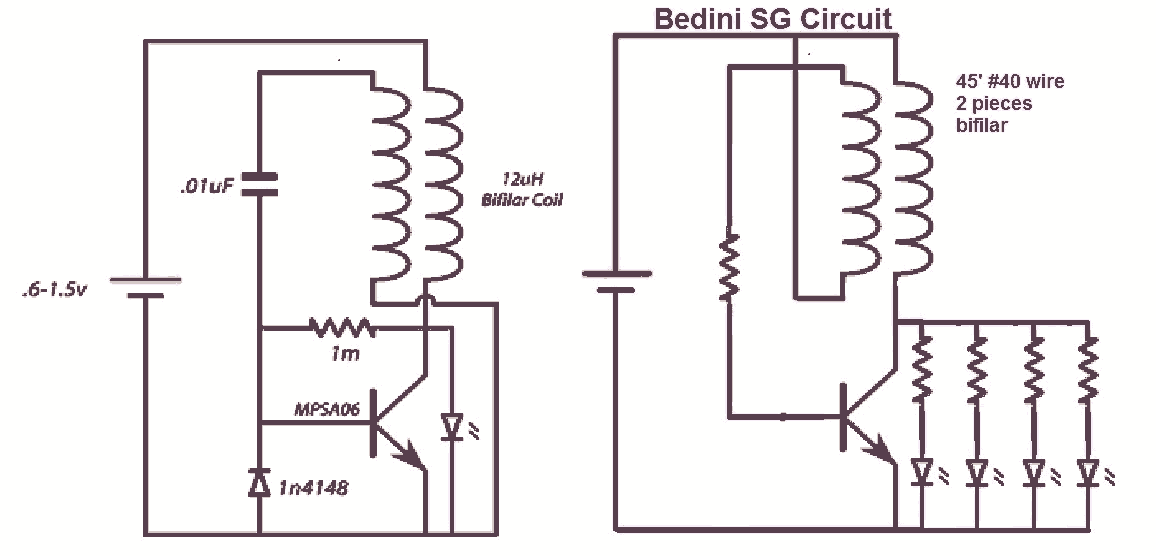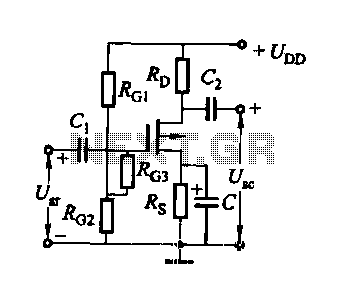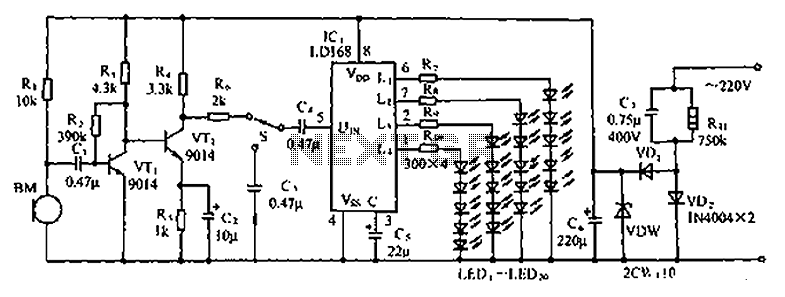
joule thief Bedini oscillator circuit

It would be beneficial to obtain schematics of the Joule Thief and Bedini oscillator circuit connections. This is an area that has not been previously explored. The schematic on the left was sourced from the Energetic Forum, while the one on the right was adapted from a Bedini presentation video from 2011.
The Joule Thief is a simple circuit designed to extract energy from a low-voltage source, typically a single AA battery, and boost it to a higher voltage suitable for powering small devices, such as LEDs. This circuit typically consists of a few key components: a transistor, a transformer (often a toroidal ferrite core with a bifilar winding), a resistor, and a capacitor. The operation of the Joule Thief relies on the principles of electromagnetic induction and feedback. When the circuit is powered, the transistor turns on, allowing current to flow through the primary winding of the transformer, which magnetically induces a current in the secondary winding. When the transistor turns off, the collapsing magnetic field induces a high voltage spike in the opposite direction, which can be used to power the load.
The Bedini oscillator, on the other hand, is a more complex circuit that serves as a pulse motor and energy recovery system. It typically includes a transistor, a flyback transformer, and several capacitors and resistors. The Bedini oscillator operates by creating a pulsing magnetic field that can drive a rotor or generate electrical energy. The circuit is designed to capture and recycle energy that would otherwise be wasted, making it a popular choice among enthusiasts interested in overunity devices or free energy concepts. The Bedini circuit can be configured in various ways, depending on the desired application, and can include additional components such as diodes for rectification and capacitors for energy storage.
Both circuits exemplify innovative approaches to energy utilization and showcase the principles of electromagnetic theory in practical applications. Understanding their schematics and operation can provide valuable insights into low-power energy harvesting and conversion techniques.It would be really nice to get schematics of the joule thief and Bedini oscillator circuit connections. Thats something I havent tried. The one on the left, I found here on the energetic forum. The one on the right I copied from a 2011 video from a Bedini presentation video. 🔗 External reference
The Joule Thief is a simple circuit designed to extract energy from a low-voltage source, typically a single AA battery, and boost it to a higher voltage suitable for powering small devices, such as LEDs. This circuit typically consists of a few key components: a transistor, a transformer (often a toroidal ferrite core with a bifilar winding), a resistor, and a capacitor. The operation of the Joule Thief relies on the principles of electromagnetic induction and feedback. When the circuit is powered, the transistor turns on, allowing current to flow through the primary winding of the transformer, which magnetically induces a current in the secondary winding. When the transistor turns off, the collapsing magnetic field induces a high voltage spike in the opposite direction, which can be used to power the load.
The Bedini oscillator, on the other hand, is a more complex circuit that serves as a pulse motor and energy recovery system. It typically includes a transistor, a flyback transformer, and several capacitors and resistors. The Bedini oscillator operates by creating a pulsing magnetic field that can drive a rotor or generate electrical energy. The circuit is designed to capture and recycle energy that would otherwise be wasted, making it a popular choice among enthusiasts interested in overunity devices or free energy concepts. The Bedini circuit can be configured in various ways, depending on the desired application, and can include additional components such as diodes for rectification and capacitors for energy storage.
Both circuits exemplify innovative approaches to energy utilization and showcase the principles of electromagnetic theory in practical applications. Understanding their schematics and operation can provide valuable insights into low-power energy harvesting and conversion techniques.It would be really nice to get schematics of the joule thief and Bedini oscillator circuit connections. Thats something I havent tried. The one on the left, I found here on the energetic forum. The one on the right I copied from a 2011 video from a Bedini presentation video. 🔗 External reference





